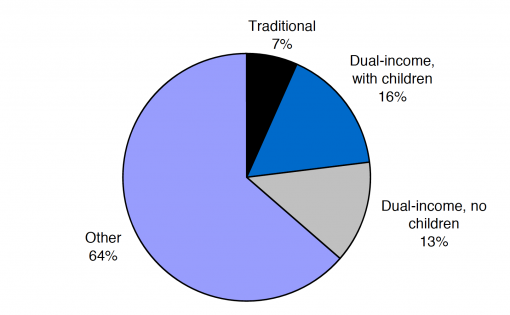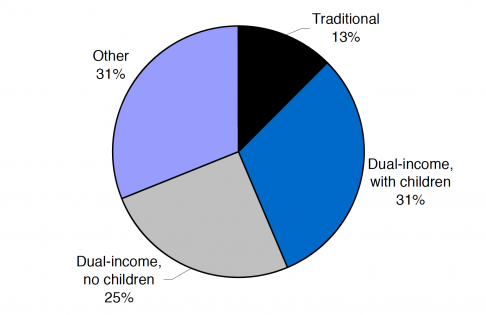
Traditional Families Account for Only 7 Percent of U.S. Households
Images of the traditional family still dominate our televisions and magazines, but they do not represent how most Americans live.
In 2002, only 7 percent of all U.S. households consisted of married couples with children in which only the husband worked. Dual-income families with children made up more than two times as many households. Even families with two incomes and no children outnumbered the traditional family by almost two to one.

Types of U.S. Households, 2002
Note: Traditional households include married-couple households with children where only the husband is in the labor force.
Source: AmeriStat, analysis of data from the 2002 Current Population Survey (March Supplement).
The large percentage of households in the “other” category shown in the accompanying graph reflects the relatively large number of female-headed households and households headed by young adults or older Americans, who are less likely to reside with spouses.

Types of U.S. Married-Couple Households, 2002
Note: Traditional households include married-couple households with children where only the husband is in the labor force.
Source: AmeriStat, analysis of data from the 2002 Current Population Survey (March Supplement)
Among married-couple households, about 13 percent consisted of families with children in which only the husband worked, 31 percent were dual-income families with children, 25 percent were dual-income families with no children, and 31 percent consisted of other types of families, such as older married couples whose children no longer reside in the household.
References
AmeriStat, tabulations from the Census Bureau’s 2002 Current Population Survey (March Supplement).
- Time-Series Data by Age, Race, and Region
- U.S. Census Bureau: Marital Status and Living Arrangements
